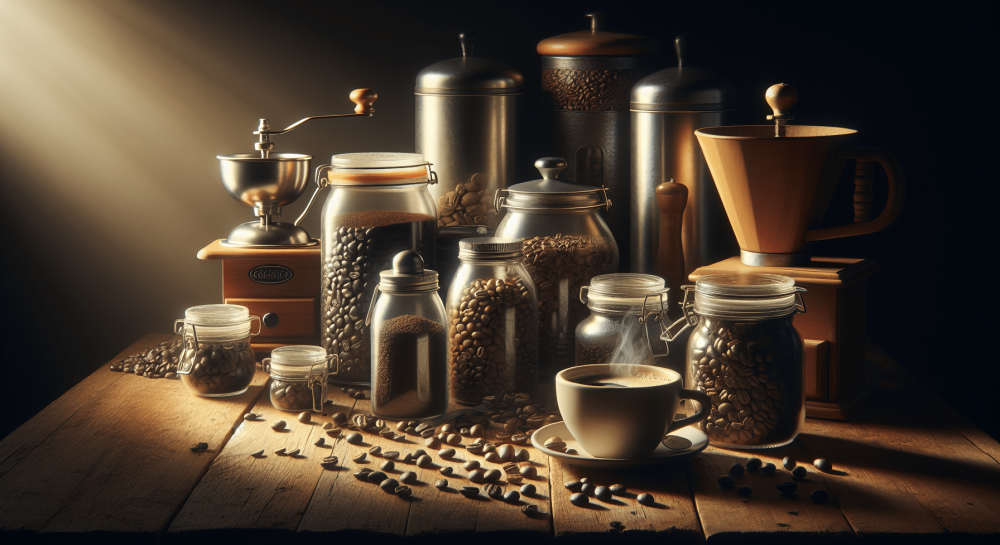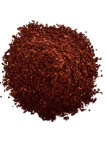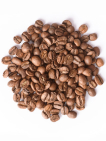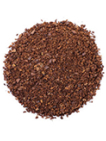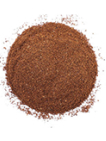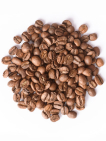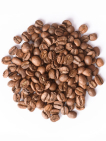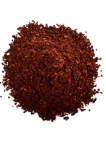Calling all coffee lovers! If you’ve ever felt a little mystified by the different types of coffee and their caffeine content, then you’re in for a treat. In this article, we’re going to unravel the great caffeine debate and uncover the secrets behind your favorite brews.
Whether you prefer a bold and robust dark roast or a smooth and creamy latte, there’s no denying the power of coffee to kickstart your day. But have you ever wondered how much caffeine is actually in your cup?
We’ll dive into the world of coffee types and explore their caffeine content, from the strong and highly caffeinated espresso to the milder decaf options. We’ll also debunk some common misconceptions and explore the factors that can influence caffeine levels in your favorite cup of joe.
So, grab your favorite mug, settle in, and prepare to unlock the mysteries of coffee types and caffeine content. By the end of this article, you’ll have a newfound appreciation for the rich and complex world of coffee. Let’s brew up some knowledge together!
Understanding Caffeine and Its Effects on the Body
Caffeine is one of the most widely consumed psychoactive substances in the world, primarily found in coffee, tea, and certain energy drinks. When ingested, caffeine acts as a central nervous system stimulant, temporarily warding off drowsiness and restoring alertness. This occurs because caffeine blocks the action of adenosine, a neurotransmitter that promotes sleep and relaxation. As adenosine levels decrease, the release of other neurotransmitters, including dopamine and norepinephrine, is enhanced, leading to increased energy, focus, and even improved mood.
However, while caffeine can provide a much-needed boost, it’s crucial to understand its effects on the body. Consuming caffeine can lead to heightened heart rates and increased blood pressure, which can be concerning for some individuals, particularly those with pre-existing health conditions. Additionally, excessive caffeine intake can result in side effects such as anxiety, jitteriness, and insomnia, particularly if consumed close to bedtime. Understanding personal tolerance levels is vital to enjoying the benefits of caffeine without experiencing negative effects.
Moreover, the metabolism of caffeine varies significantly from person to person. Factors such as genetics, age, and even hormonal changes can influence how quickly individuals process caffeine. For instance, pregnant women and individuals taking certain medications may metabolize caffeine more slowly, making them more susceptible to its effects. This variability highlights the importance of listening to your body and adjusting caffeine consumption accordingly to maintain optimal health and well-being.
Different Types of Coffee and Their Caffeine Content
Coffee comes in a plethora of varieties, each with its unique flavor profile and caffeine content. The most commonly consumed types include espresso, drip coffee, French press, and cold brew. Each preparation method significantly impacts not only the taste and aroma of the coffee but also the amount of caffeine extracted from the beans. Understanding these differences can help coffee lovers make informed choices about their caffeine intake.
Espresso, for instance, is often seen as the strongest coffee due to its concentrated nature. A standard shot of espresso (about 1 ounce) typically contains around 63 milligrams of caffeine. However, because it is often served in small quantities, many people might overlook its higher caffeine concentration compared to other coffee types. On the other hand, a standard 8-ounce cup of brewed drip coffee usually contains approximately 95 milligrams of caffeine. This discrepancy in serving size and preparation method can lead to some confusion regarding which type of coffee is truly more caffeinated.
Other coffee varieties, such as French press and cold brew, also play significant roles in the caffeine content landscape. French press coffee, made by steeping coarsely ground coffee in hot water, can yield caffeine levels similar to or even exceeding that of drip coffee. Cold brew coffee is known for its smooth flavor and is often made with a higher coffee-to-water ratio, leading to a more concentrated caffeine content. As a result, a typical serving of cold brew may contain anywhere from 100 to 200 milligrams of caffeine, depending on the brewing method and coffee-to-water ratio used.
Espresso vs. Drip Coffee: Which Has More Caffeine?
When comparing espresso and drip coffee, many assume that espresso holds the title for the most caffeine. While this is true on a per-ounce basis, it’s essential to consider serving sizes to understand the overall caffeine content consumed. A single shot of espresso contains about 63 milligrams of caffeine in just one ounce, while an 8-ounce cup of drip coffee contains roughly 95 milligrams. So, although espresso is more concentrated, you would need to consume multiple shots to match the caffeine of a standard cup of drip coffee.
For instance, if you were to drink two shots of espresso, you would be consuming around 126 milligrams of caffeine, surpassing the caffeine content of a single cup of drip coffee. However, most coffee drinkers typically consume their espresso in smaller quantities. This leads to a common misconception that espresso is the most caffeinated option available. Understanding serving sizes clarifies the confusion and allows coffee enthusiasts to make informed choices based on their caffeine needs.
The brewing method also plays a significant role in caffeine extraction. Drip coffee involves water passing through the coffee grounds, allowing for a longer extraction time compared to espresso, which is brewed quickly under pressure. This difference in brewing time affects not just the flavor profile but also the caffeine levels. Ultimately, whether you prefer espresso or drip coffee may come down to personal taste and desired caffeine intake throughout the day.
Decaf Coffee: How Much Caffeine Is Really in It?
Decaffeinated coffee is often perceived as a caffeine-free alternative for those looking to reduce their intake without sacrificing the experience of enjoying a warm cup of joe. However, it’s important to clarify that decaf coffee is not entirely devoid of caffeine. In fact, most decaffeinated coffee retains a small amount of caffeine, generally ranging from 2 to 5 milligrams per 8-ounce cup. This residual caffeine can still have subtle effects on sensitive individuals or those who have been advised to limit their caffeine consumption.
The decaffeination process itself is fascinating. Coffee beans are typically treated with water, organic solvents, or carbon dioxide to remove caffeine. While most of the caffeine is eliminated, it is nearly impossible to remove every last bit. As a result, decaf coffee drinkers might still experience some degree of alertness, especially when consumed in larger quantities. This is particularly relevant for those who might be sensitive to caffeine or are trying to limit their intake for health reasons.
Moreover, the flavor and aroma of decaf coffee can differ from regular coffee due to the decaffeination process. Some coffee aficionados argue that decaf lacks the richness and complexity of fully caffeinated varieties. However, advancements in decaffeination techniques have improved the flavor and quality of decaf coffee over the years, making it a more appealing option for those who wish to enjoy coffee without the jitters associated with caffeine. Ultimately, understanding the caffeine content in decaf coffee helps consumers make informed choices that align with their lifestyle and preferences.
The Caffeine Content of Popular Coffee Drinks
Coffee drinks come in various forms, each with its unique blend of flavors and varying caffeine levels. From lattes to cappuccinos and flavored coffees, it’s essential to know what you’re consuming. For instance, a classic latte, made with one shot of espresso and steamed milk, typically contains about 63 milligrams of caffeine, similar to that of a single shot of espresso. However, many coffee lovers opt for a double-shot latte, which increases the caffeine content to around 126 milligrams.
Cappuccinos, another popular choice, also start with a single shot of espresso. Therefore, they share the same caffeine content as lattes. However, the ratio of milk to coffee in a cappuccino can create a different experience. Additionally, specialty drinks like macchiatos and Americanos can have varied caffeine levels based on the number of espresso shots used. An iced Americano, for example, consists of espresso diluted with cold water, allowing for a refreshing yet potent caffeine hit.
Flavored coffees and seasonal offerings, such as pumpkin spice lattes or caramel macchiatos, can often have added syrups and toppings that contribute to the overall experience. However, it’s crucial to check the caffeine content as well, as these drinks can sometimes conceal their caffeine levels under layers of cream and sweetness. For those who enjoy a sweeter coffee experience, knowing how much caffeine is in these drinks helps maintain a balance between flavor and energy levels throughout the day.
The Great Caffeine Debate: Unraveling the Mystery of Coffee Types and Caffeine Content
